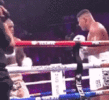Actually, more kids are watching "other sports".
Gemba conducted an analysis of Australian viewing habits of local and foreign sports to gauge the viability of the NRL adding a 17th team to the competition. The results on p10 showed that sports such as NRL, AFL, Cricket are in serious decline while American sports are thriving.
Here's an excerpt from p10.
• Baseball, Basketball and American Football have grown in popularity in Australia in recent years as international sporting leagues rise in popularity
• Sports that have pinnacle leagues in Australia (such as Rugby League, Cricket and Australian Rules Football) have shown signs of declining passion amongst Australians
• Global Sports like Basketball also tend to have younger Fanatical supporters. On average, 36% of Global Sports Fanatics are aged between 16 and 30 years old, compared to only 25% of ‘Australian Sports’* Fanatics
If you go down to p38 it says people who've played rugby league are more than seven times likely to buy club memberships than people who've never participated.
Here's an excerpt from p38.
• Gemba’s data shows Rugby League participants are more engaged over the entire value chain of the sport
• With Rugby League participants significantly more likely to purchase more than just their club registration fees, this will continue to drive incremental revenue to the game
• The largest difference is the number of those who are financial members of an NRL team, with Rugby League participants over seven times more likely to be a member of an NRL club than those who are not participants
I'd say that's a pretty damning statistic.
Wouldn't you?
On p9 it says Australians are following more sports and entertainment options than ever.
• The number of sport and entertainment passions Australians have today has increased by an average of 3.6 properties since 2011
• Through the proliferation of digital technology like social media, the accessibility of global content, and the increasing quality of sport and entertainment products, consumers are now allocating their finite disposable time across a greater number of passions
• This rise in passion is linked to popular entertainment like Music and Electronic Gaming, as well as the globalisation of sports like Basketball and Football
• Roughly half of casual Rugby League fans* are passionate about Australian Rules Football and just over a third are passionate about Basketball
According to the
Gemba report, a team needs to generate $10,000,000 from game day to cover the costs of competing in the NRL.
Here's an excerpt from p28.
• Based on benchmarks from existing smaller NRL clubs, it is estimated that a new club would have operating costs of $23.6m per year which is largely driven by Player Wages and Other Wages
• The NRL provides clubs with a Grant of at least $13.6m and covers some other operational expenses which aren’t included in the estimated total costs
• Assuming a new club had an operating cost base of $23.6m, the club would need to generate $10.0m in revenue through Sponsorship, Game Day Revenue, Hospitality, Membership etc. in order to break even. This is expected to be challenging in early years due to the competitive landscape in which the club is entering
• If the club is unable to achieve this, the operating loss would need to be covered by the club or the NRL would be required to provide additional financial support
Based on the annual reports of the clubs I posted on p1 of
the following thread, the Bulldogs and Sharks have failed to generate $10,000,000 from game day.
In 2019 the Bulldogs generated just $7,832,705 from sponsorship, corporate hospitality, ticketing and membership. In 2018 they generated just $9,007,994.
In 2019 and 2018 the Sharks generated just $8,469,218 and $9,198,250 from sponsorship, corporate hospitality, ticketing and membership.
Pretty shit, hey?
Doesn't eat club have a member on the ARLC?
If so then that means there are nine commissioners from the Sydney clubs and just three representing Queensland's three teams.
Who do you think has the most influence when it comes to voting on a resolution?
You can bet your arse the representatives of the Sydney clubs will vote as a block to keep the status quo in Sydney. The QRL and NSWRL have bugger all say.
How do you explain rugby league not dying in Queensland in 1988?
There were strong rivalries between the eight traditional BRL fanbases. Ipswich had a pretty parochial fanbase that attacked Wally Lewis during a game that was played at North Ipswich Reserve. Using your logic the game should have lost all of its fans in Brisbane when the Broncos entered the NSWRL.
The NSL averaged crowds of about 5,000. The A-League draws far better attendances.
An article on The Roar actually compared the NSL to A-League. Here's a transcript of its section on NSL and A-League crowds.
Present A-League crowds are also far superior to the last years of the National Soccer League.
From 1997-98 to 2003-04 the NSL averaged 5000 at best, with the figure down to 4100 and 3800 in its last two seasons.
Prior to the A-League, from 1997-98 to 2003-04, no Melbourne or Sydney team got close to averaging 10,000 spectators, with South Melbourne only twice averaging over 8000.
In fact the only teams that averaged above 10,000 from 1997-98 to 2003-04 were Adelaide United in 2003-04 (12,643), Northern Spirit in its first 1998-99 season (14,633) and Perth Glory for several years from 1997-98 until 2002-03 (its peak was 14,909 in 1997-98).
While some point to Channel Seven hardly boosting interest in the NSL by limiting the amount of free-to-air coverage to a one-hour highlights package, crowd attendances then were not affected by live television coverage, as they are today.
Although Melbourne Victory shows that an A-League side can average over 20,000 for a full season, having done so on ten occasions – with a record average 27,728 in 2007-08, boosted by large crowds at Docklands Stadium – achieving a crowd average above 10,000 has got harder.
Of the 67 occasions when an A-League (Australian) team averaged 10,000 for a home-and-away season from 2004-05 to 2019-20, Melbourne teams did so on 18 occasions and Sydney teams (counting Central Coast) 22 times.
Melbourne Victory has done so on 15 occasions, Sydney FC 14 on occasions.
Next is Brisbane (formerly Queensland) Roar ten times, although not since 2016-17, with its peak average 16,949 in 2007-08.
Adelaide has achieved such an average nine times, but not since 2015-16 after a record average of 12,697 in 2007-08.
Newcastle has averaged more than 10,000 six times, with the last being in 2017-18 (it peaked at 13,388 in 2012-13).
Perth, which was the most popular club prior to the A-League from 1997-98 to 2003-04, has only achieved an average crowd of 10,000 twice in the A-League, most recently during the 2018-19 season.



